Choosing the Perfect Summer Bulbs for a Vibrant Garden, Patio or Balcony. Don't Forget to Plant them in Spring!
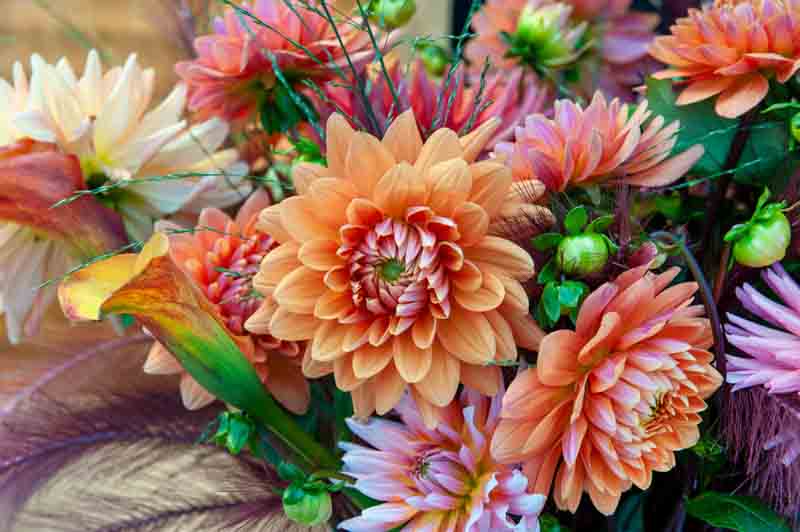
Summer bulbs are a fantastic way to inject vibrant colors, varied textures, and captivating fragrances into your garden or pots. Unlike their spring counterparts, summer bulbs tend to bloom later in the season, offering a refreshing burst of life and beauty during the hottest months. They are perfect for gardeners looking to extend the blooming season well into late summer and early fall.
Growing summer bulbs is relatively easy and rewarding, as many of them thrive with minimal care. They can be planted in the ground or in containers, making them versatile for different gardening spaces and styles. From sun-loving gladiolas to shade-tolerant begonias, there’s a summer bulb for every type of garden. Additionally, these bulbs often produce spectacular blooms that make excellent cut flowers for indoor arrangements.
When selecting summer bulbs for your garden or pots, consider factors such as sunlight exposure, soil type, and the overall design of your garden. Many summer bulbs prefer full sun and well-draining soil, but there are varieties that can also thrive in partial shade.
Gloriosa Lilies dazzle with their exotic, fiery blooms of crimson and yellow, featuring unique, reflexed petals and pronounced stamens. These tropical climbers add dramatic flair to gardens and containers, blooming vividly through summer to fall, transforming any space into a vibrant display of nature’s unparalleled beauty.
| Hardiness | 8 - 10 |
|---|---|
| Plant type | Bulbs, Climbers |
| Exposure | Full Sun, Partial Sun |
| Season of Interest |
Spring (Late) Summer (Early, Mid, Late) Fall |
| Height |
3' - 6' (90cm - 180cm) |
| Spread |
1' - 3' (30cm - 90cm) |
Fragrant and graceful, Gladiolus callianthus murielae (Abyssinian Sword-Lily) features sword-shaped leaves and magnificent white star-like flowers with a purple blotch. Blooming in late summer, it makes a stunning companion to blue asters, adding fragrance and elegance to the garden.
| Hardiness | 7 - 10 |
|---|---|
| Plant type | Bulbs, Perennials |
| Exposure | Full Sun |
| Season of Interest |
Summer (Late) Fall |
| Height |
2' - 3' (60cm - 90cm) |
| Spread |
1' - 2' (30cm - 60cm) |
Lycoris squamigera, or Resurrection Lily, enchants with fragrant, rosy pink trumpets edged in lavender, blooming atop naked stems in late summer. Cold hardy, its strap-shaped leaves emerge in spring, making it a stunning showstopper in sunny borders or containers and an excellent choice for cut flower arrangements.
| Hardiness | 5 - 9 |
|---|---|
| Plant type | Bulbs, Perennials |
| Exposure | Full Sun, Partial Sun |
| Season of Interest |
Summer (Late) Fall |
| Height |
1' - 2' (30cm - 60cm) |
| Spread |
1' - 2' (30cm - 60cm) |
Galtonia candicans, known as Summer Hyacinth, graces gardens with elegant spikes of fragrant, bell-shaped white flowers, often tinged with green. Blooming in late summer, it offers a fresh wave of beauty, complemented by its dark green, strap-like foliage, making it a serene yet striking addition to any setting.
| Hardiness | 7 - 10 |
|---|---|
| Plant type | Bulbs, Perennials |
| Exposure | Full Sun |
| Season of Interest |
Summer (Late) |
| Height |
2' - 4' (60cm - 120cm) |
| Spread |
2' - 3' (60cm - 90cm) |
Sparaxis tricolor, or Harlequin Flower, enlivens gardens with vivid, open star-shaped blooms in a mix of red, orange, yellow, lavender, or white, each centered with a contrasting yellow throat. Blooming in late spring or early summer, this South African native adds a cheerful burst of color to any garden.
| Hardiness | 7 - 10 |
|---|---|
| Plant type | Bulbs, Perennials |
| Exposure | Full Sun |
| Season of Interest |
Spring (Late) Summer (Early) |
| Height |
6" - 1' (15cm - 30cm) |
| Spread |
8" - 1' (20cm - 30cm) |
Freesias, celebrated for their sweet fragrance and vibrant colors, are popular as cut flowers. Each stem yields 5-10 trumpet-shaped blooms on one-sided racemes, with various hybrids available in single or double forms and diverse colors. Low-maintenance, disease and pest-resistant, they also make striking border plants with eye-catching contrasts.
| Hardiness | 9 - 10 |
|---|---|
| Plant type | Bulbs, Perennials |
| Exposure | Full Sun |
| Season of Interest |
Spring (Early, Mid, Late) Summer (Early, Mid, Late) Fall Winter |
| Height |
1' - 2' (30cm - 60cm) |
Putting on a spectacular display in the late season garden, award-winning Nerine bowdenii (Guernsey Lily) is a bulbous perennial forming clumps of strap-shaped rich green leaves. In late summer or early fall, tall, erect stalks push up from among the leaves, bearing large umbels of five to ten trumpet-shaped, faintly-scented, brilliant pink flowers, up to 3 in. across (8 cm), adorned with wavy-edged petals. Blooming for up to 4-6 weeks, Guernsey Lilies are ideal accent plants for mixed borders, rockeries or cutting gardens.
| Hardiness | 8 - 10 |
|---|---|
| Plant type | Bulbs, Perennials |
| Exposure | Full Sun, Partial Sun |
| Season of Interest |
Summer (Late) Fall |
| Height |
1' - 2' (30cm - 60cm) |
| Spread |
3" - 6" (8cm - 15cm) |
Polianthes tuberosa, or Tuberose, enchants with intensely fragrant, elongated spikes of waxy, white funnel-shaped flowers from late summer to fall. Its scented blossoms tower over grass-like green leaves, ideal for planting near patios or walkways to enjoy their aroma. Also prized as exquisite cut flowers.
| Hardiness | 7 - 11 |
|---|---|
| Plant type | Bulbs, Perennials |
| Exposure | Full Sun |
| Season of Interest |
Summer (Late) Fall |
| Height |
2' - 3' (60cm - 90cm) |
| Spread |
2' - 3' (60cm - 90cm) |
Oriental Lilies stand out as the showstoppers of the lily world, boasting immense, intensely fragrant, and vividly colored blooms. These exotic hybrids, originating from Japan, grace gardens from mid to late summer, sometimes into fall. Their large, often spotted flowers come in shades of white, pink, red, and feature striking yellow bands. While more challenging to grow than Asiatic or Trumpet Lilies, their majestic beauty is a rewarding addition to any garden.
| Hardiness | 3 - 9 |
|---|---|
| Plant type | Bulbs, Perennials |
| Exposure | Full Sun, Partial Sun |
| Season of Interest |
Summer (Mid, Late) |
| Height |
2' - 6' (60cm - 180cm) |
| Spread |
6" - 2' (15cm - 60cm) |
Asiatic hybrid Lilies, known for being early bloomers and easy growers, brighten gardens in early to mid-summer with a spectrum from soft pastels to vivid reds and oranges. They boast straight stems, high bud counts, and often spotted blossoms, ranging from open bowls to recurved petals. Enjoying a long bloom season, they are typically unscented.
| Hardiness | 4 - 8 |
|---|---|
| Plant type | Bulbs, Perennials |
| Exposure | Full Sun, Partial Sun |
| Season of Interest |
Summer (Early, Mid) |
| Height |
2' - 5' (60cm - 150cm) |
| Spread |
1' - 2' (30cm - 60cm) |
With their exquisite beauty, alliums are a must-have for perennial gardens. These easy-to-grow bulbs come in a wide range of colors, inflorescence types, heights, and bloom times, adding diversity and charm. They often bloom in early summer, bridging the gap between spring and summer.
| Hardiness | 4 - 10 |
|---|---|
| Plant type | Bulbs |
| Exposure | Full Sun |
| Season of Interest |
Spring (Late) Summer (Early) |
| Height |
6" - 4' (15cm - 120cm) |
| Spread |
6" - 2' (15cm - 60cm) |
Caladium is a tropical plant known for its vibrant and colorful foliage. With large heart-shaped leaves in shades of green, pink, red, and white, it adds a striking visual appeal to gardens and indoor spaces. Caladiums thrive in shaded areas and require well-drained soil to flourish. They are popular choices for adding a splash of tropical beauty to any setting.
| Hardiness | 9 - 12 |
|---|---|
| Plant type | Bulbs, Houseplants |
| Exposure | Partial Sun, Shade |
| Season of Interest |
Spring (Early, Mid, Late) Summer (Early, Mid, Late) Fall Winter |
| Height |
1' - 3' (30cm - 90cm) |
| Spread |
1' - 2' (30cm - 60cm) |
Native to South Africa, the Calla Lily, also known as Zantedeschia or Arum Lily, is a striking genus of flowering plants. Renowned for their unique, chalice-shaped flowers (spathes) that encircle a yellow, finger-like stalk (spadix), Calla Lilies are a popular choice for both gardens and household settings. With their arrow-shaped, often spotted leaves, Calla Lilies make a magnificent impact in any setting, whether as part of garden borders, container arrangements, or as cut flowers.
| Hardiness | 7 - 10 |
|---|---|
| Plant type | Bulbs |
| Exposure | Full Sun, Partial Sun |
| Season of Interest |
Spring (Late) Summer (Early, Mid, Late) Fall |
| Height |
1' - 3' (30cm - 90cm) |
| Spread |
1' - 2' (30cm - 60cm) |
Dahlias are versatile and stunning flowers that come in a wide variety of colors, shapes, and sizes. They are beloved for their intricate blooms, ranging from single to fully double forms. With their vibrant hues and diverse petal arrangements, dahlias make excellent cut flowers and add a vibrant touch to gardens and floral arrangements alike.
| Hardiness | 8 - 11 |
|---|---|
| Plant type | Bulbs, Perennials |
| Exposure | Full Sun |
| Season of Interest |
Summer (Mid, Late) Fall |
| Height |
1' - 6' (30cm - 180cm) |
| Spread |
1' - 2' (30cm - 60cm) |
Gladioli, or sword lilies, are stunning cormous perennials that captivate with their striking spikes of funnel-shaped flowers in a wide array of colors. With sword-shaped leaves as a backdrop, they create a dramatic display of rich hues and impressive vertical lines. Easy to grow with proper care, they are perfect for beds, borders, containers, and floral arrangements.
| Hardiness | 5 - 11 |
|---|---|
| Plant type | Bulbs, Perennials |
| Exposure | Full Sun |
| Season of Interest |
Spring (Late) Summer (Early, Mid, Late) Fall Winter |
| Height |
2' - 6' (60cm - 180cm) |
| Spread |
1' - 2' (30cm - 60cm) |
Tuberous Begonias are a popular choice for their show-stopping blooms in a wide range of vibrant colors. These versatile plants can be grown in containers, hanging baskets, or garden beds, adding a touch of elegance to any space. With their easy care and long-lasting flowers, they are a favorite for summer gardens.
| Hardiness | 9 - 11 |
|---|---|
| Plant type | Bulbs, Perennials |
| Exposure | Partial Sun, Shade |
| Season of Interest |
Summer (Early, Mid, Late) Fall |
| Height |
1' - 2' (30cm - 60cm) |
| Spread |
1' - 2' (30cm - 60cm) |
Canna, also known as Canna lily or Indian shot, is a tropical perennial plant appreciated for its vibrant flowers and striking foliage. With large paddle-shaped leaves and showy blooms in a range of colors including red, orange, yellow, and pink, they add a bold and tropical element to gardens. They thrive in warm climates and can be grown in containers or as bedding plants.
| Hardiness | 8 - 11 |
|---|---|
| Plant type | Perennials |
| Exposure | Full Sun |
| Season of Interest |
Summer (Early, Mid, Late) Fall |
| Height |
2' - 8' (60cm - 240cm) |
| Spread |
1' - 3' (30cm - 90cm) |
Crocosmia plants are highly ornamental with upright, sword-shaped leaves and vibrant wands of scarlet, red, orange, and yellow tubular flowers. Their blooms last for 5-8 weeks from mid-summer to mid-fall, attracting hummingbirds and butterflies. After flowering, seedpods develop, providing food for birds and adding interest to the garden throughout fall.
| Hardiness | 6 - 10 |
|---|---|
| Plant type | Bulbs, Perennials |
| Exposure | Full Sun, Partial Sun |
| Season of Interest |
Summer (Mid, Late) Fall |
| Height |
1' - 5' (30cm - 150cm) |
| Spread |
1' - 2' (30cm - 60cm) |
Colocasia, known as Elephant Ear or Taro, boasts dramatic, heart-shaped leaves, creating a lush, tropical ambiance. Thriving in moist environments, this fast-growing ornamental plant is celebrated for its striking foliage, ranging from deep green to black. While grown mainly for its foliage, Colocasia is also an important agricultural crop in many cultures, valued for its edible tubers.
| Hardiness | 8 - 11 |
|---|---|
| Plant type | Bulbs, Perennials |
| Exposure | Full Sun, Partial Sun |
| Season of Interest |
Spring (Early, Mid, Late) Summer (Early, Mid, Late) Fall Winter |
| Height |
2' - 10' (60cm - 3m) |
| Spread |
2' - 10' (60cm - 3m) |
Iris germanica, commonly known as Bearded Iris or German Iris, is a captivating perennial with show-stopping flowers in various colors. Its tall, elegant stalks and distinctively patterned petals create a striking presence in gardens. Easy to grow and low-maintenance, it is a favorite choice for adding beauty to landscapes.
| Hardiness | 3 - 10 |
|---|---|
| Plant type | Perennials |
| Exposure | Full Sun |
| Season of Interest |
Spring (Late) Summer (Early, Late) |
| Height |
9" - 4' (23cm - 120cm) |
| Spread |
1' - 2' (30cm - 60cm) |
Agapanthus, commonly known as Lily of the Nile, is a stunning perennial plant prized for its large clusters of trumpet-shaped flowers atop tall stalks. Available in shades of blue, purple, and white, these showy blooms rise above strappy, green foliage, adding a touch of elegance to gardens and landscapes. Agapanthus is drought-tolerant and attracts pollinators.
| Hardiness | 7 - 11 |
|---|---|
| Plant type | Perennials |
| Exposure | Full Sun, Partial Sun |
| Season of Interest |
Summer (Early, Mid, Late) Fall |
| Height |
1' - 4' (30cm - 120cm) |
| Spread |
1' - 4' (30cm - 120cm) |
Tigridia pavonia, commonly known as Mexican Shellflower or Tiger Flower, is a striking perennial bulbous plant. It features large, showy flowers with vibrant colors and unique markings resembling a tiger pattern. Blooming in summer, the flowers open for a single day, adding a burst of tropical beauty to the garden.
| Hardiness | 8 - 10 |
|---|---|
| Plant type | Bulbs |
| Exposure | Full Sun, Partial Sun |
| Season of Interest |
Summer (Mid, Late) |
| Height |
1' - 2' (30cm - 60cm) |
| Spread | 5" (13cm) |
Lycoris, commonly known as surprise lilies or spider lilies, are striking flowering bulbs that emerge from the ground without leaves, creating a surprising burst of color in late summer or early fall. Their vibrant flowers, ranging from red and pink to white and yellow, make a dramatic statement in any garden.
| Hardiness | 5 - 10 |
|---|---|
| Plant type | Bulbs, Perennials |
| Exposure | Full Sun, Partial Sun |
| Season of Interest |
Summer (Late) Fall |
| Height |
1' - 2' (30cm - 60cm) |
| Spread |
1' - 2' (30cm - 60cm) |
Eucomis, resembling a pineapple, is an elegant beauty that adds an exotic flair to gardens in late summer and fall. Its distinctive spikes boast open-faced starry flowers, creating a captivating sight reminiscent of tropical charm.
| Hardiness | 7 - 10 |
|---|---|
| Plant type | Bulbs |
| Exposure | Full Sun |
| Season of Interest |
Summer (Late) Fall |
| Height |
10" - 3' (25cm - 90cm) |
| Spread |
1' - 2' (30cm - 60cm) |
Alstroemeria, commonly known as Peruvian Lily or Lily of the Incas, is a perennial plant with vibrant, trumpet-shaped flowers in various colors. It features lush foliage and long-lasting blooms, making it a popular choice for cut flower arrangements. Alstroemeria thrives in well-drained soil and blooms from late spring to early summer.
| Hardiness | 7 - 10 |
|---|---|
| Plant type | Bulbs, Perennials |
| Exposure | Full Sun, Partial Sun |
| Season of Interest |
Summer (Early, Mid, Late) Fall |
| Height |
1' - 3' (30cm - 90cm) |
| Spread |
1' - 2' (30cm - 60cm) |
Hymenocallis, known as Spider Lily, boasts unique, fragrant, spider-like blooms, making it a standout in any garden. This easy-to-grow bulb thrives in warm climates, attracts pollinators, and is perfect for adding tropical elegance to borders, water features, and as a captivating, aromatic addition to floral arrangements.
| Hardiness | 5 - 11 |
|---|---|
| Plant type | Bulbs, Perennials |
| Exposure | Full Sun, Partial Sun |
| Season of Interest |
Spring (Early, Mid, Late) Summer (Early, Mid, Late) Fall |
| Height |
1' - 3' (30cm - 90cm) |
| Spread |
1' - 5' (30cm - 150cm) |
Growing summer bulbs offers numerous benefits, making them a valuable addition to any garden:
Designing a garden with summer bulbs can create a vibrant, colorful, and dynamic landscape. Here are some tips to effectively incorporate summer bulbs into your garden design:
Aftercare:
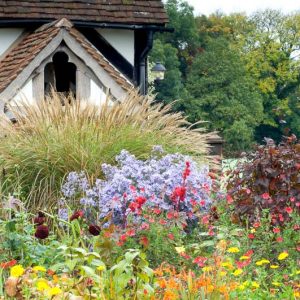
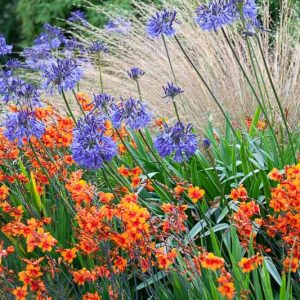
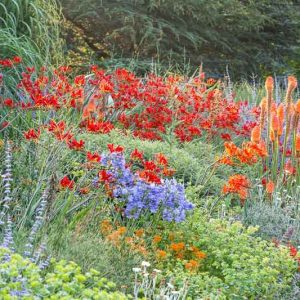
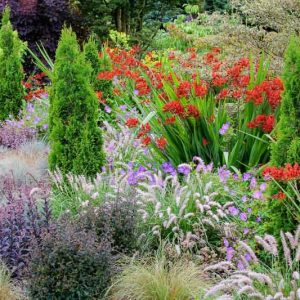
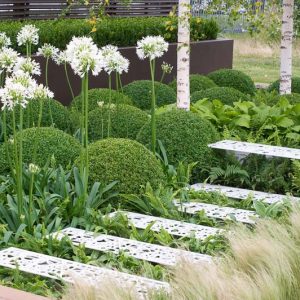
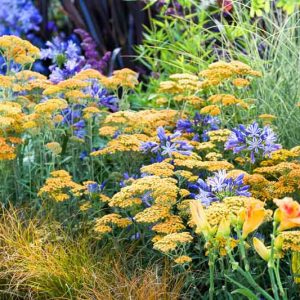
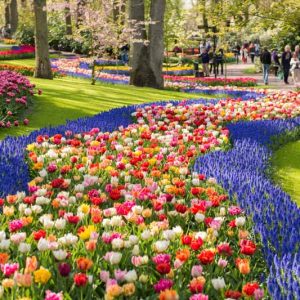
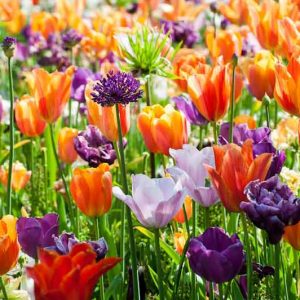
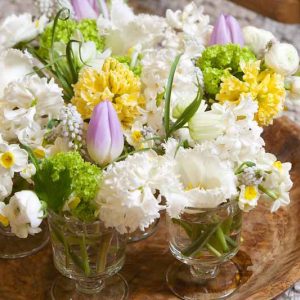
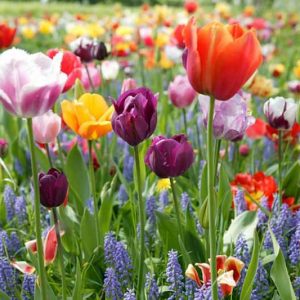
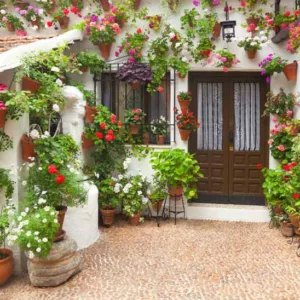
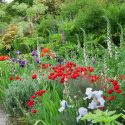
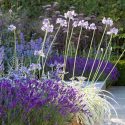
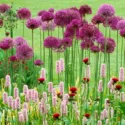

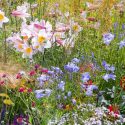


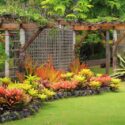

Create a membership account to save your garden designs and to view them on any device.
Becoming a contributing member of Gardenia is easy and can be done in just a few minutes. If you provide us with your name, email address and the payment of a modest $25 annual membership fee, you will become a full member, enabling you to design and save up to 25 of your garden design ideas.
Join now and start creating your dream garden!
Create a membership account to save your garden designs and to view them on any device.
Becoming a contributing member of Gardenia is easy and can be done in just a few minutes. If you provide us with your name, email address and the payment of a modest $25 annual membership fee, you will become a full member, enabling you to design and save up to 25 of your garden design ideas.
Join now and start creating your dream garden!